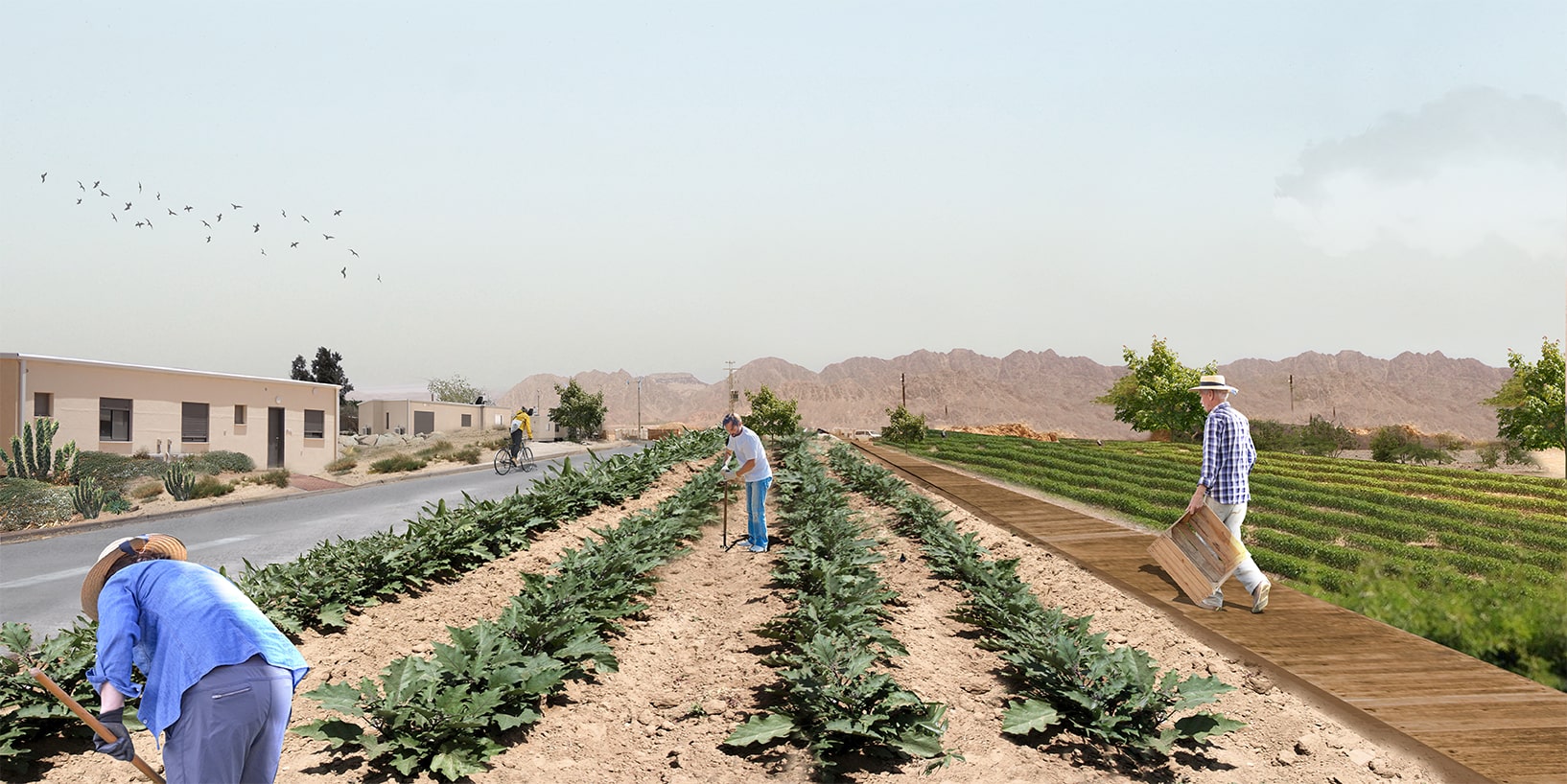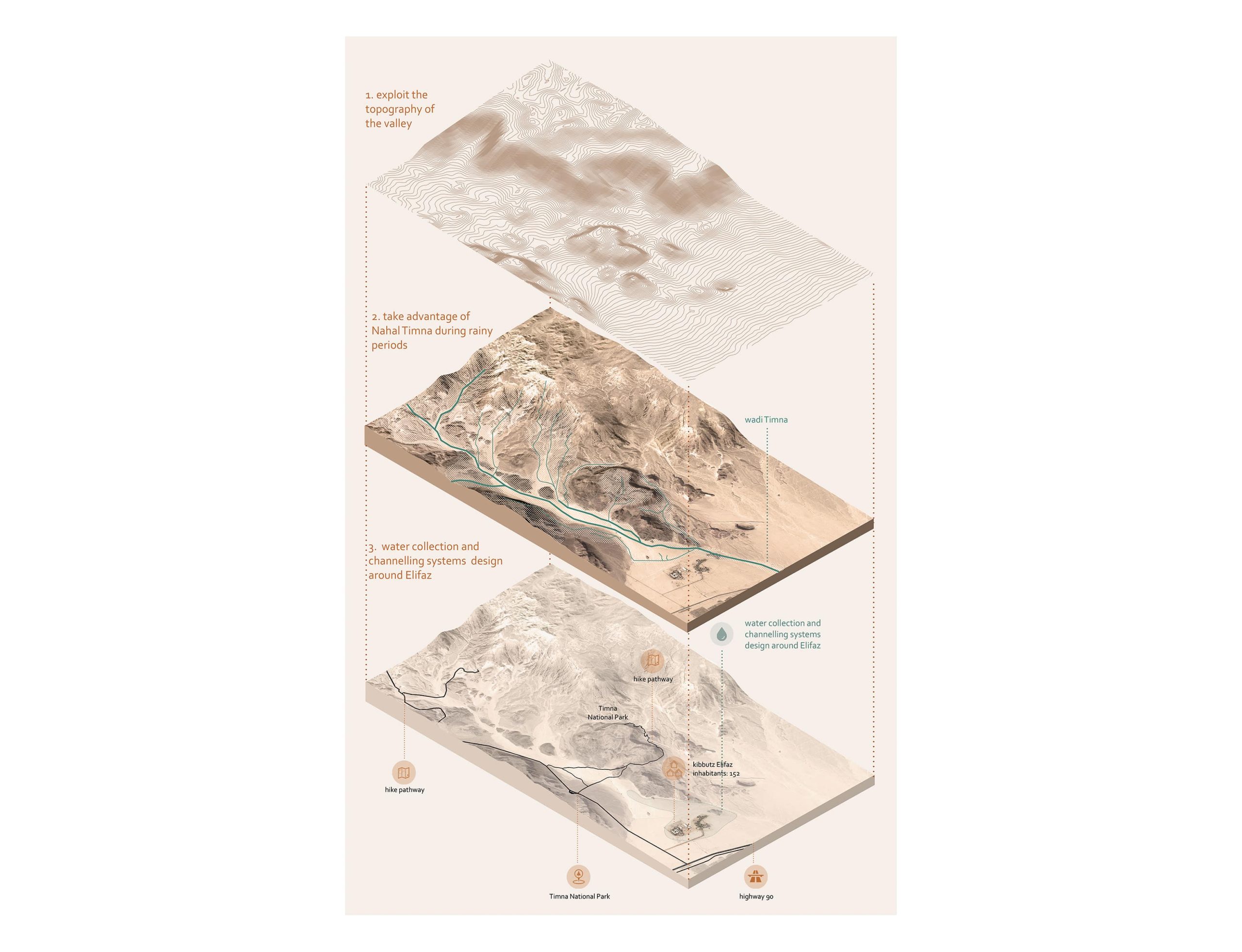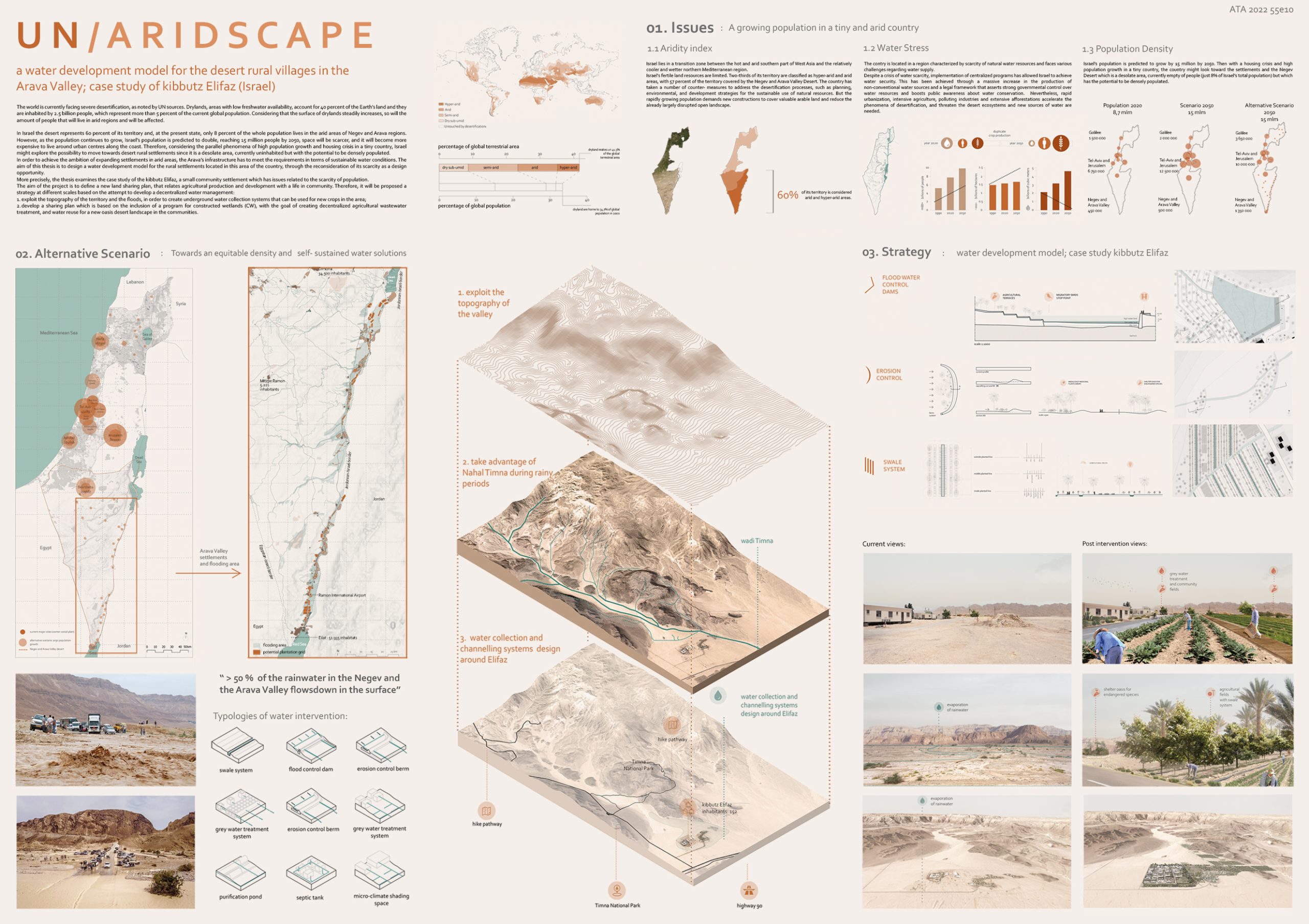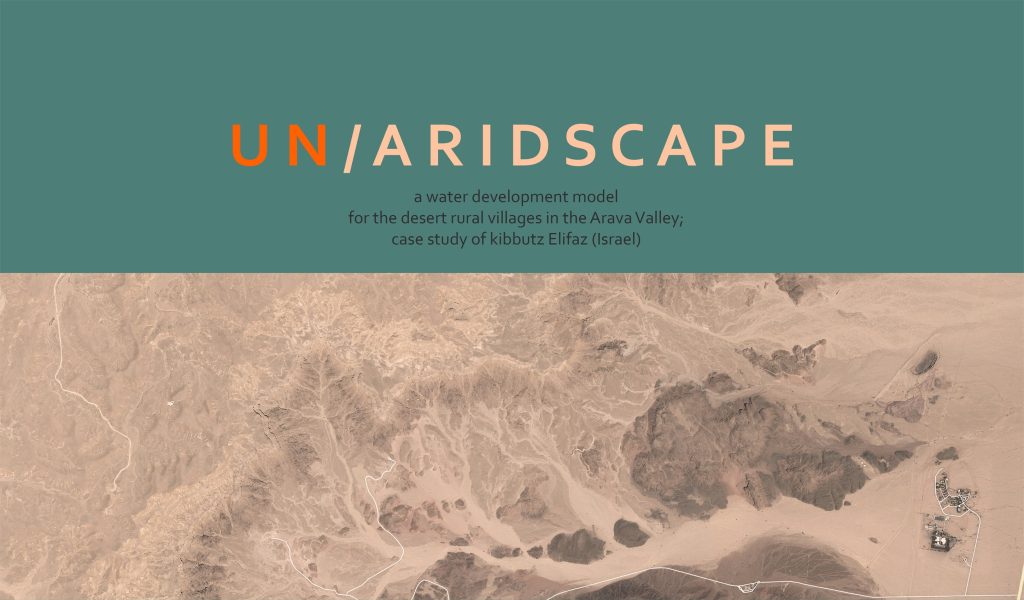UN/ARIDSCAPE is a landscape project based on designing a decentralized water management model for rural settlements in the desert of the Arava Valley, in the southern part of Israel, in order to meet the needs of a growing population.

The world is currently facing severe desertification, as noted by UN sources. Drylands, areas with low freshwater availability, account for 40 percent of the Earth’s land and they are inhabited by 2.5 billion people, which represent more than 5 percent of the current global population. Considering that the surface of drylands steadily increases, so will the amount of people that will live in arid regions and will be affected.
In Israel the desert represents 60 percent of its territory and, at the present state, only 8 percent of the whole population lives in the arid areas of Negev and Arava regions. However, as the population continues to grow, Israel’s population is predicted to double reaching 15 million people by 2050.
As a result of the future increase of population and the scarcity of urban soil, it will become more expensive to live around urban centers along the coast. Therefore, considering the parallel phenomena of high population growth and housing crisis in a tiny country, Israel might explore the possibility to expand towards desert rural settlements.
The project aims to improve the quality of life in the incomplete villages in the Arava Valley in order to be able to attract a growing population. This can be achieved by a resilient design which develops around localized water solutions, enabling communities to be more sustainable, self- sustained and capable of meeting the challenges of population growth and climate change.

The studies collected throughout the thesis show that in the arid areas of the Valley there is enough rainfall to re-green an area, but more than 50% of rainwater is lost as it evaporates and remains on the surface, causing flooding in certain areas.
The project starts by rethinking of that wastewater, through the reconsideration of its scarcity as a design opportunity, in a place where every drop can make the difference. In this sense it shows how a disadvantage might be turned into an advantage and concur for the development of rural settlements and the ecology of the Arava Valley.
The main programs to be implemented along the valley are: flood control systems, water harvesting, effluent treatment and reuse of treated wastewater for crop irrigation and landscaping.
More precisely, the thesis examines the case study of the kibbutz Elifaz, a small community settlement which has issues related to the scarcity of population and water by defining a new land sharing plan, that relates agricultural production and development with a community life. Therefore, it will be proposed a strategy at different scales based on the attempt to develop a decentralized water management.
The case of the Elifaz kibbutz is not intended to be a circumscribed case but taken as a model, which can provide guidelines to be applied to the other settlements along the Arava Valley in order to create a decentralized infrastructure network that accompanies the growth of settlements.

The Board:






